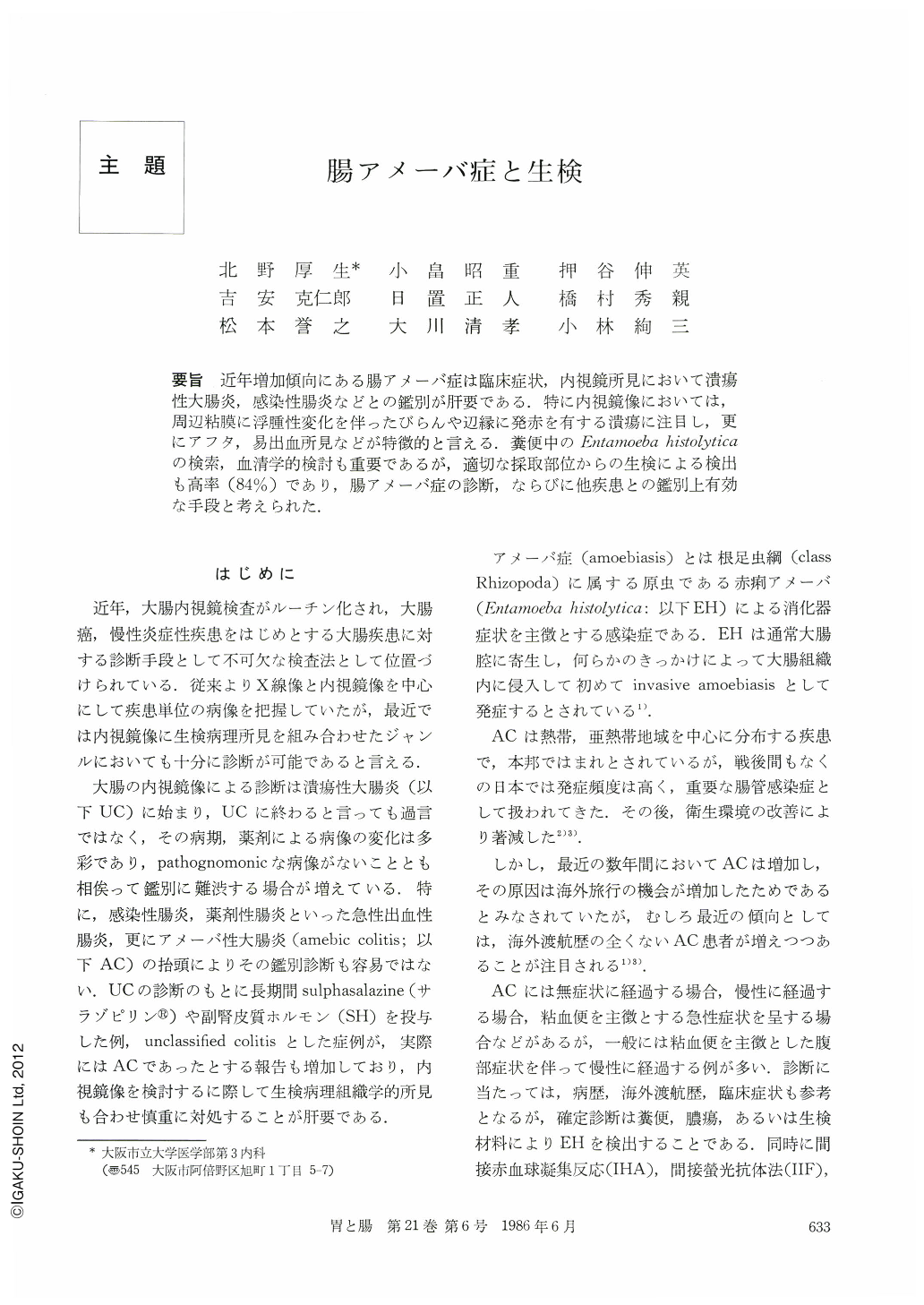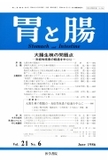Japanese
English
- 有料閲覧
- Abstract 文献概要
- 1ページ目 Look Inside
要旨 近年増加傾向にある腸アメーバ症は臨床症状,内視鏡所見において潰瘍性大腸炎,感染性腸炎などとの鑑別が肝要である.特に内視鏡像においては,周辺粘膜に浮腫性変化を伴ったびらんや辺縁に発赤を有する潰瘍に注目し,更にアフタ,易出血所見などが特徴的と言える.糞便中のEntamoeba histolyticaの検索,血清学的検討も重要であるが,適切な採取部位からの生検による検出も高率(84%)であり,腸アメーバ症の診断,ならびに他疾患との鑑別上有効な手段と考えられた.
Amebic colitis, one of the major intestinal-infectious diseases after the second world war, markedly decreased in incidence in the 1970's. However, this infection has been noticed again with increasing frequency in these five years. Particularly, attention should be paid for the increase in the number of the patient who had never been abroad.
With respect to clinical symptoms, most patients complained of bloody or muco-bloody stool, which closely resembles to ulcerative colitis.
Although it is important to detect Entamoeba histolytica (EH) in the feces, colonoscopic biopsy is one of the useful diagnostic procedures since EH is most likely to be detected in the histological specimen. In addition, seroimmunological method is useful in diagnosing amebic colitis.
Thirteen cases of amebic colitis have been diagnosed at our department. The average age was 47 years with male being dominant. The average length of symptomatic period was 17.4 months. Only thirty percent of the patients have the history of being abroad.Rectum and sigmoid colon were inflammed in 70 percent of the patients. Colonoscopic examination revealed friable ulcer, aphthous ulcer, and TAKOIBO erosion. EH was detected histologically in 84 percent of the patients. Latex haemmagglutination test for amebiasis was positive in all of these cases.

Copyright © 1986, Igaku-Shoin Ltd. All rights reserved.


